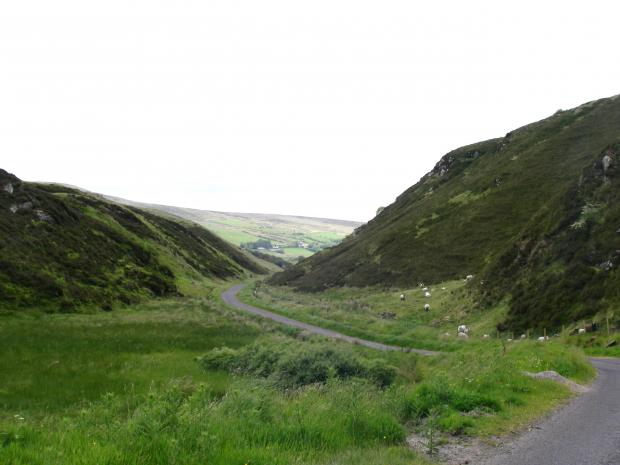
Butterlope Glen is a special place because of its Earth Science interest.The area provides access to important geological features.
Butterlope Glen has been strongly influenced by glacial activity at the end of the last ice age and particularly by glacial waters generated as the ice in this area melted.
The Glen provides a section through some of the rocks that make up the Sperrin Mountains. The rocks are actually overturned so instead of the youngest rocks being uppermost, the oldest rocks appear to be ‘on top’. The rocks are youngest at the southern end of the site with progressively older rocks occurring towards the north of the Glen.
The rocks were originally deposited in an ancient ocean at the margin of the past continent of Laurentia. Eventually these rocks were caught up in the continental collisions associated with the closure of the Iapetus Ocean. The rocks were altered (metamorphosed) by pressure and heat while the pressure also resulted in their being distorted and overturned.
Rocks at this site include metamorphosed sandstones and mudstones while ash layers and lavas show that there was volcanic activity at the time they originally formed.
Related articles
- ASSI Guidance for Public Bodies/Competent Authorities
- Coastal Areas of Special Scientific Interest
- Conservation Management Plans (CMPs)
- European Marine Sites - Marine Special Areas of Conservation and Special Protection Areas
- Introduction to Conservation Management Plans (CMPs) for Northern Ireland’s Special Areas of Conservation
- Marine Conservation Zones
- Marine Protected Areas
- Marine Ramsar sites
- Portrush Coastal Zone
- Special Areas of Conservation
- Special Areas of Conservation for Harbour porpoise
- Special Protection Areas
